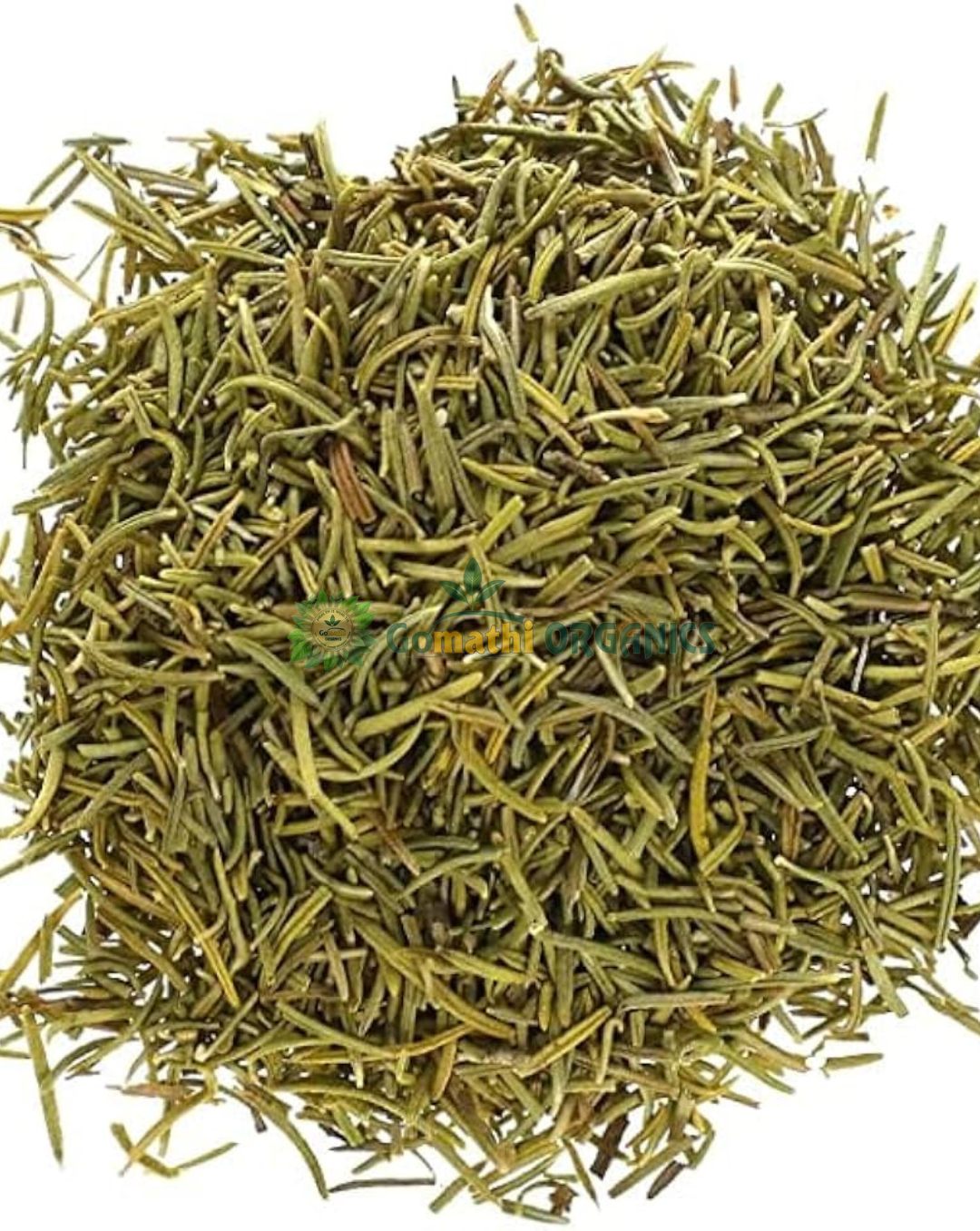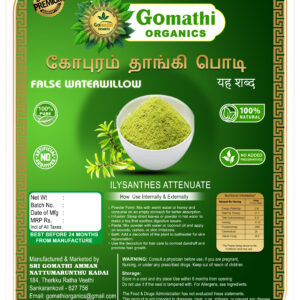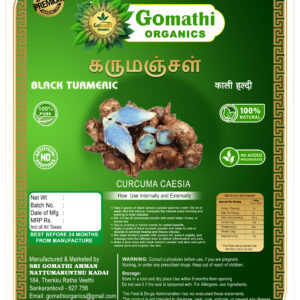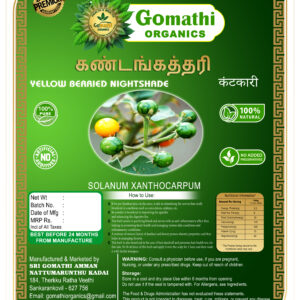What is Rosemary (Rosmarinus officinalis)?
🌿 Rosmarinus officinalis, commonly known as Rosemary, is an aromatic evergreen herb widely used in culinary, medicinal, and cosmetic applications.
🌿 It is native to the Mediterranean region but is now cultivated worldwide for its culinary and therapeutic benefits.
🌿 Rosemary leaves are rich in antioxidants, essential oils, and bioactive compounds like rosmarinic acid, camphor, and carnosic acid, which contribute to its anti-inflammatory, antibacterial, and memory-enhancing properties.
🌿 Used in Ayurveda, Siddha, and Western herbal medicine, rosemary is beneficial for brain health, digestion, skin care, and hair growth.
Description of Rosemary Plant (Rosmarinus officinalis)
🌱 Rosemary is an evergreen, woody shrub that grows up to 1.5 meters tall.
🌱 The leaves are needle-like, dark green on top, and silvery-white underneath.
🌱 The flowers are small, blue to purple, and bloom in clusters along the stems.
🌱 The leaves emit a strong, pine-like fragrance due to their high essential oil content.
🌱 The plant is drought-tolerant and grows well in warm, sunny climates with well-drained soil.
Morphological Characteristics of Rosemary Leaves (Rosmarinus officinalis)
🌿 A small, aromatic, evergreen shrub growing up to 1–1.5 meters tall.
🌿 The leaves are narrow, linear, leathery, and dark green with a silvery underside.
🌿 The flowers are small, light blue, purple, or white, appearing in clusters along the stems.
🌿 The plant thrives in full sunlight and prefers sandy, well-drained soil.
🌿 The essential oils in the leaves contribute to its medicinal and aromatic properties.
🌿 Known for its memory-enhancing, anti-inflammatory, and antibacterial effects.
Habitat of Rosemary (Rosmarinus officinalis)
🌿 Rosmarinus officinalis is native to the Mediterranean region but is now cultivated in Europe, North America, India, and parts of Asia.
🌿 Grows best in warm, dry climates with well-drained soil and full sunlight.
🌿 Found in coastal regions, hillsides, and dry, rocky terrains.
🌿 Commonly grown in gardens, herbal farms, and commercial plantations for culinary and medicinal use.
🌿 Requires minimal water and is highly drought-resistant.
Rosemary Organic Information
🌿 100% pure and natural, free from chemicals, pesticides, and additives.
🌿 Contains powerful antioxidants and essential oils, making it beneficial for brain function, digestion, and immune health.
🌿 Used in Ayurveda, Siddha, and Western herbal medicine for cognitive enhancement, skin health, and respiratory wellness.
🌿 Sourced from sustainably cultivated farms, ensuring high quality and freshness.
🌿 Carefully handpicked, sun-dried, and processed to preserve its potency and natural aroma.
🌿 A versatile herb used in cooking, herbal teas, aromatherapy, skincare, and haircare.
Different Language Names
⭐ Tamil: ரோஸ்மேரி இலை (Rosemary Ilai)
⭐ Hindi: गुलमेंहदी पत्ता (Gulmehndi Patta)
⭐ Sanskrit: भूषणपत्रम् (Bhushanapatram)
⭐ Malayalam: റോസ്മേരി ഇല (Rosemary Ila)
⭐ Kannada: ರೋಸ್ಮೇರಿ ಎಲೆ (Rosemary Ele)
⭐ Telugu: రోజ్మెరీ ఆకు (Rosemary Aaku)
⭐ Bengali: রোজমেরি পাতা (Rosemary Pata)
⭐ Marathi: रोजमेरी पान (Rosemary Paan)
⭐ Gujarati: રોઝમેરી પાન (Rosemary Paan)
⭐ Punjabi: ਰੋਜ਼ਮੇਰੀ ਪੱਤਾ (Rosemary Patta)
⭐ Odia: ରୋଜମେରି ପତ୍ର (Rosemary Patra)
⭐ Assamese: ৰোজমেৰী পাত (Rosemary Paat)
⭐ Urdu: روزمیری پتہ (Rosemary Patta)
⭐ Konkani: रोजमेरी पान (Rosemary Paan)
⭐ Tulu: ರೋಸ್ಮೇರಿ ಎಲೆ (Rosemary Ele)
⭐ Meitei (Manipuri): রোজমেরি গছপাত (Rosemary Gasapat)
⭐ Dogri: ਰੋਜ਼ਮੇਰੀ ਪੱਤਾ (Rosemary Patta)
⭐ Kashmiri: روزمیری پتہ (Rosemary Patta)
⭐ Maithili: रोजमेरी पत्ता (Rosemary Patta)
⭐ Chhattisgarhi: रोजमेरी पत्ता (Rosemary Patta)
⭐ Rajasthani: रोजमेरी पत्ता (Rosemary Patta)
⭐ Sindhi: روزميري پتو (Rosemary Pattu)
⭐ Nepali: रोजमेरी पात (Rosemary Paat)
⭐ Arabic: أوراق إكليل الجبل (Awrāq Iklīl al-Jabal)
⭐ Chinese: 迷迭香叶 (Mí dié xiāng yè)
⭐ Malay (Malaysia): Daun Rosemary
⭐ Thai: ใบโรสแมรี่ (Bai Rosmari)
⭐ Vietnamese: Lá Hương Thảo
⭐ Spanish: Hojas de Romero
⭐ French: Feuilles de Romarin
⭐ Sri Lankan Sinhala: රෝස්මේරි කොළ (Rosemary Kola)
⭐ Indonesian: Daun Rosemary
⭐ German: Rosmarinblätter
⭐ Italian: Foglie di Rosmarino
⭐ Family Name: Lamiaceae (Mint Family)
⭐ Botanical (Latin) Name: Salvia rosmarinus (Rosmarinus officinalis)
⭐ Common Names: Rosemary Leaves, Gulmehndi Leaves, Dew of the Sea Leaves
Nutritional Information (per 100g)
Energy: 130-160 kcal
Carbohydrates: 20-30g
Dietary Fiber: 14-18g
Protein: 3-6g
Calcium: 300-400mg
Iron: 6-10mg
Vitamin C: 20-30mg
Phytochemicals: Rosmarinic Acid, Flavonoids, Tannins, Terpenoids
Nutritional Facts
✔ Enhances memory, concentration, and cognitive function.
✔ Rich in antioxidants, supporting immune health.
✔ Contains natural anti-inflammatory and antimicrobial properties.
✔ Aids digestion and helps relieve bloating.
✔ Supports heart health and helps regulate blood circulation.
✔ Free from artificial colors, flavors, and preservatives.
Dosage
For Adults: 1-2 teaspoons (2-4g) per day.
For Children: ½ teaspoon (1g) per day.
Maximum Dosage: Do not exceed 8g per day unless recommended by a healthcare professional.
How to Consume
Internal Use
Rosemary Leaves with Water: Steep 1 teaspoon of dried rosemary leaves in a cup of hot water for 5–10 minutes. Strain and drink daily to support digestion and overall wellness.
Rosemary Tea: Boil 1 teaspoon of dried rosemary leaves in a cup of water for 5–10 minutes. Strain and drink while warm. This tea may help boost memory, reduce stress, and support immune health.
With Honey: Mix 1 teaspoon of rosemary leaf powder with a spoonful of honey and consume directly. This combination may help with respiratory health and provide antioxidant benefits.
External Use
For Skin Care: Make a paste by mixing rosemary leaf powder with water or rose water. Apply to the affected area for relief from acne, rashes, or minor skin irritations.
For Hair Care: Boil rosemary leaves in water, let it cool, and use it as a final hair rinse to promote hair growth and scalp health.
For Aromatherapy: Add dried rosemary leaves to hot water and inhale the steam for relaxation and respiratory relief.
How to Use & Store
✔ Store dried rosemary leaves in an airtight container to prevent exposure to moisture.
✔ Keep them away from direct sunlight to maintain their aroma and potency.
✔ Always ensure the lid is tightly closed after every use.
✔ Store in a cool, dry place for extended shelf life and maximum effectiveness.
Caution to Be Taken
⚡ Consult a physician if pregnant, breastfeeding, or on medication.
⚡ Possible interactions with medications, especially those affecting blood pressure, blood sugar, and blood clotting.
⚡ Avoid excessive consumption to prevent potential toxicity or adverse effects.
⚡ Not suitable for infants or young children without medical advice.
⚡ May cause allergic reactions in sensitive individuals—conduct a patch test before topical use.
⚡ Always consult a healthcare provider for personalized dosage and safety considerations.
Important Tips
☀️ Start with a Low Dose 🌱: Begin with a small amount to assess tolerance.
☀️ Use in Moderation 🌿: Avoid excessive or prolonged use without guidance.
☀️ Choose High-Quality Products 🍁: Purchase from trusted sources to ensure purity and effectiveness.
☀️ Conduct a Patch Test 🍂: Always test on a small skin area before topical application.
☀️ Proper Storage Matters 🍃: Store in airtight, non-metal containers away from direct sunlight to preserve potency and freshness.
Harvesting & Manufacturing Method
☀️ Organically Sourced 🌳: Rosemary Leaves (Salvia rosmarinus) are cultivated without synthetic chemicals, ensuring natural purity.
☀️ Sustainably Harvested 🌿: Collected from naturally growing rosemary plants in ecologically balanced regions.
☀️ Handpicked & Sun-Dried 🌱: Dried naturally under the sun to retain essential oils and medicinal properties.
☀️ No Additives or Chemicals 🌾: Processed without artificial preservatives, maintaining its raw and authentic nature.









Reviews
There are no reviews yet.